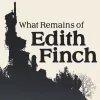Take a look inside 4 images
What Remains of Edith Finch
Pros: Rich with meaning. Only two to three hours long.
Cons: No learning/school supports. Deep learning requires an understanding of game mechanics.
Bottom Line: This is a fairly short game that could offer a great spin on literary and textual analysis for the right classroom.
How Can I Teach with This Tool?
What Remains of Edith Finch is a narrative-driven game that follows Edith Finch -- the last surviving member of the Finch family -- as she travels back to her childhood home, uncovering memories of her lost relatives. It takes about two and a half hours to play, and the controls are simple enough for most students. The themes are mature, and it can be creepy (it's a mystery after all), but teens will love it. As they play, students will find themselves exploring the extraordinarily detailed house, clicking on points of interest, and unraveling the fascinating story of the mysterious, cursed Finch family. Some of these story elements involve evocative, fantastical interactive vignettes that re-imagine past family experiences.
This is one of those games that's so well told that it's perfectly suited to the kind of literary or textual analysis most often applied to books, essays, or poems. Teachers can ask students to play the game at home, or a teacher could project and play through it in class (with students observing or rotating as the player). Afterward, teachers could facilitate discussions about what the game means and the unique ways that it communicates that meaning -- for instance, how the physical design of the house mirrors a family tree, or the scene at the cannery uses interactivity to model monotony and depression. It'd also be useful to pair What Remains of Edith Finch with another more traditional text (like a novel) that touches on similar themes or also employs magical realism (a key technique of the game), and then have students tease out how the two texts compare.












